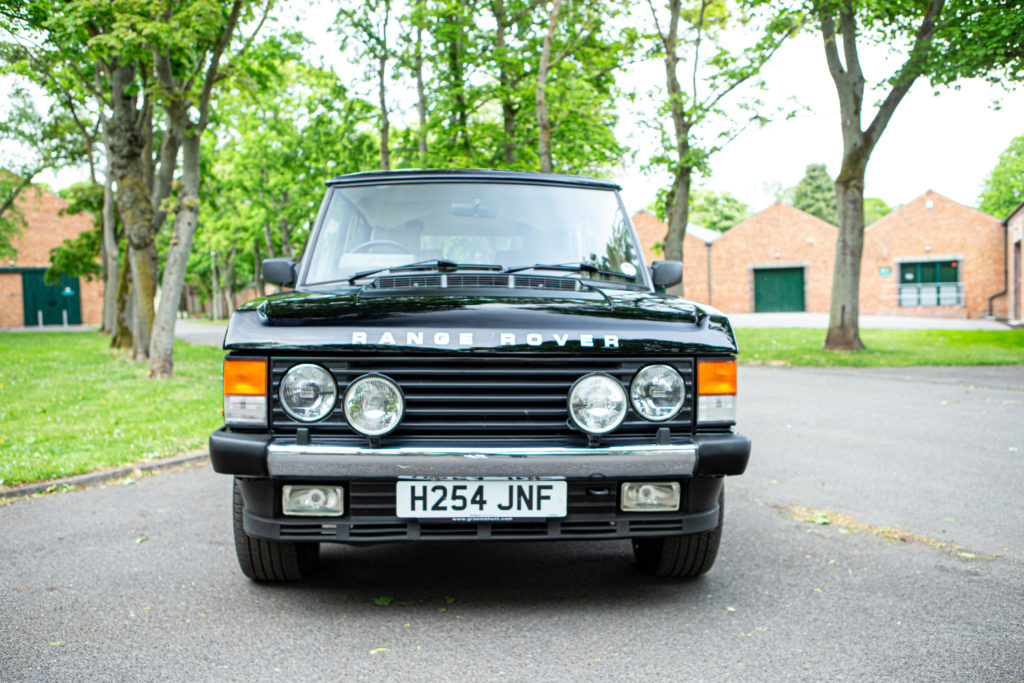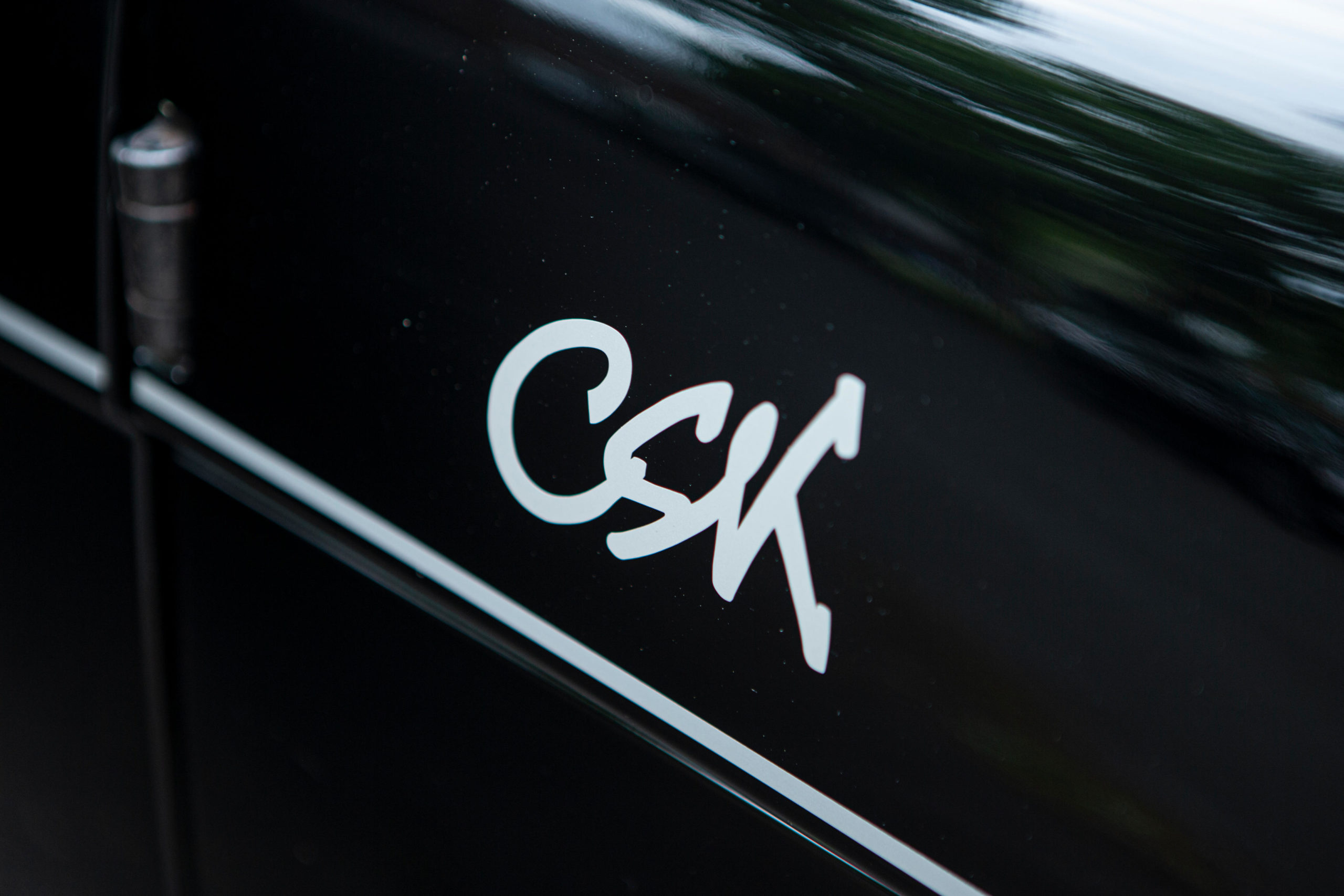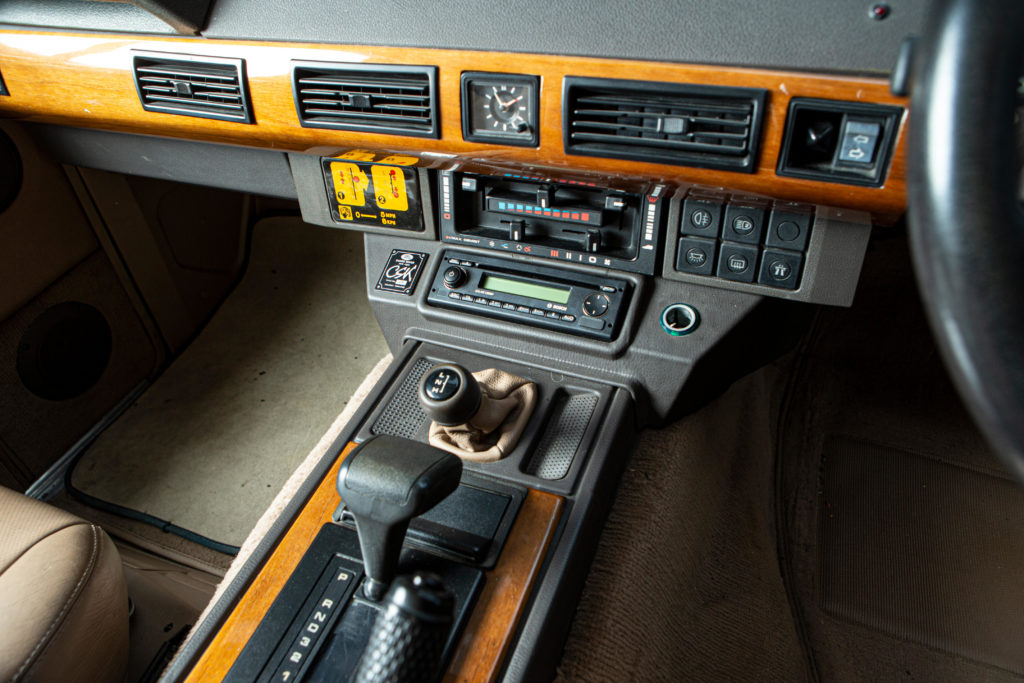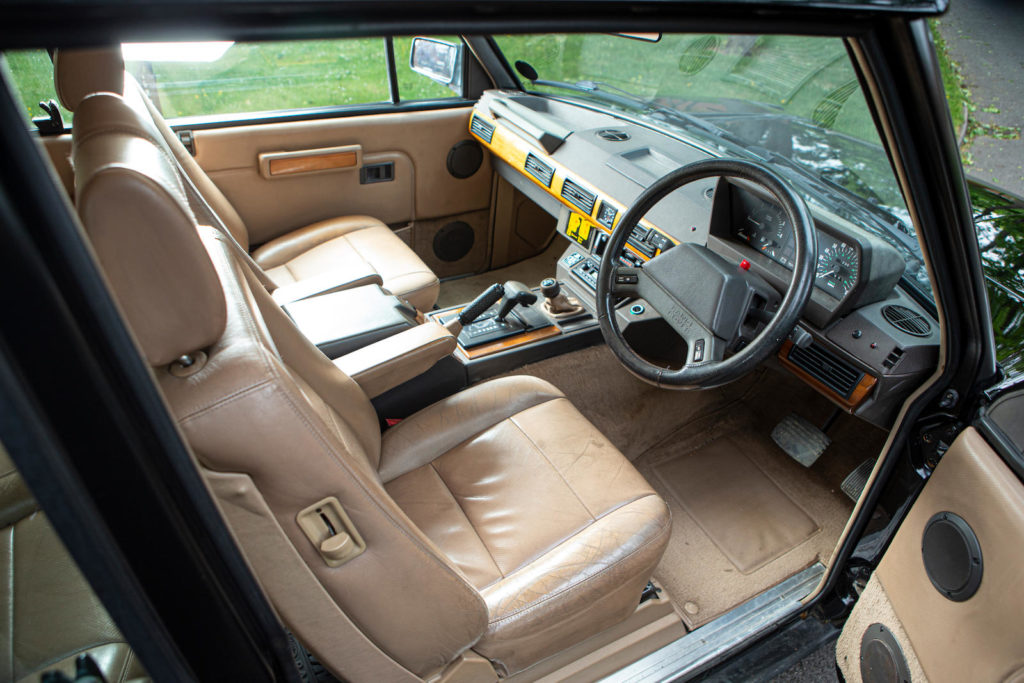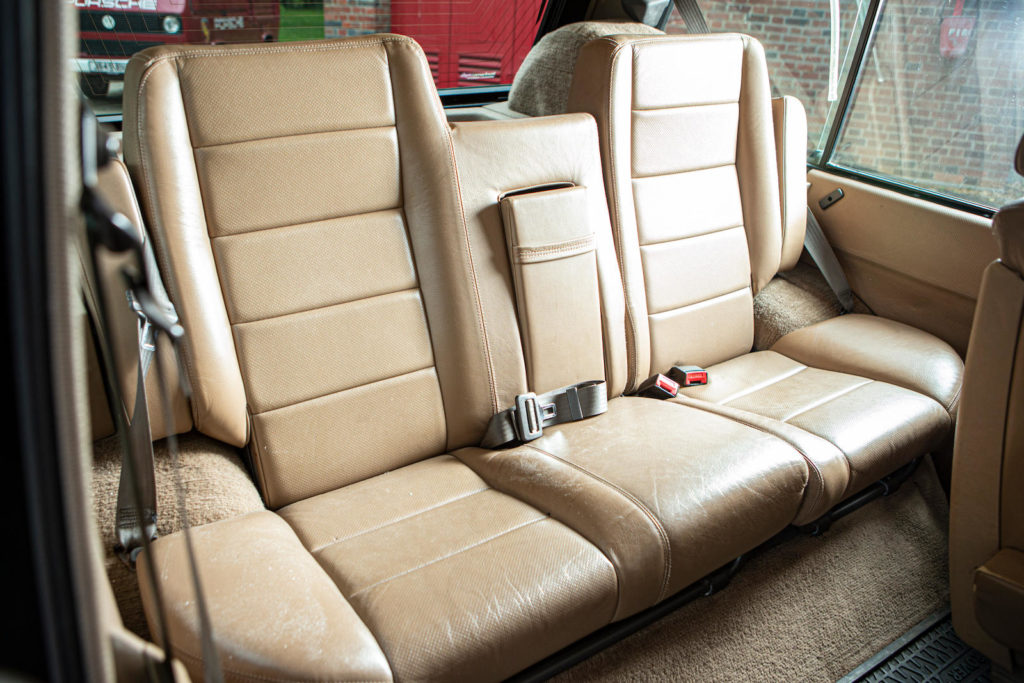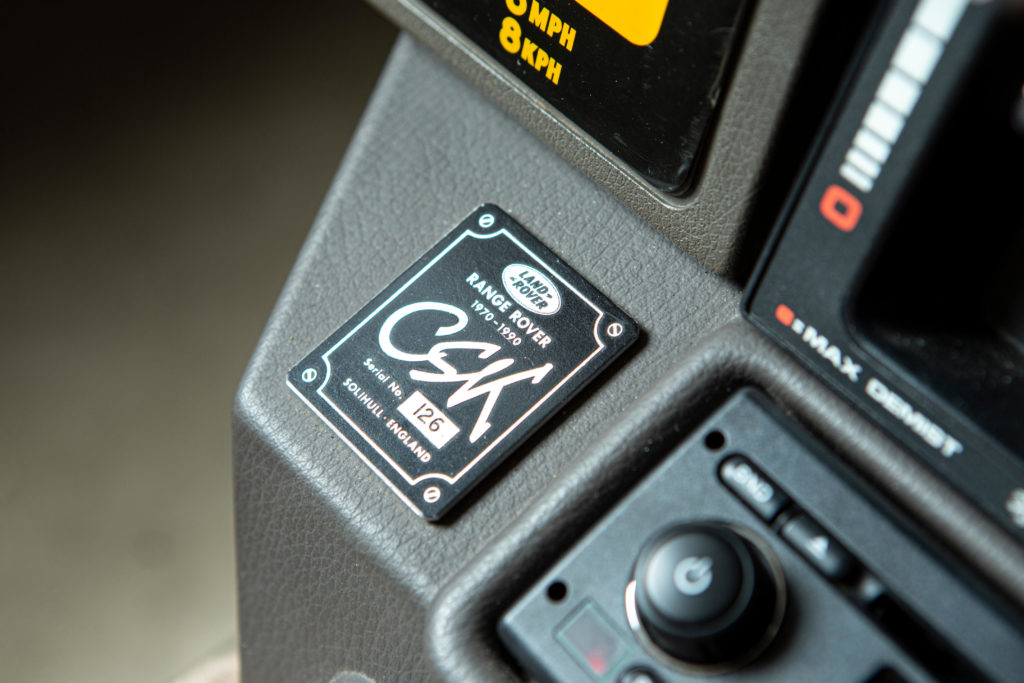MODEL SUMMARY
Model year 1990/91
Limited Edition of 200 sold primarily in the UK celebrating Range Rover’s 20th anniversary
2 door Range Rover Classic – in any colour ‘as long as it’s black’
3.9ltr Petrol – manual 5 speed or auto 4 speed box
Specification based on the 4 door Vogue – with much upgraded running gear
Background
This 2 door limited edition of the Classic Range Rover represents the ultimate predecessor to the Sports Utility vehicle. In fact, until the launch of the Range Rover Sport in 2005, it was generally considered the ultimate ‘sporty Range Rover’. The edition was named simply “CSK” after Charles Spencer (‘Spen’) King, the man who lead Land Rover’s New Vehicle Projects Team and oversaw the original development of the early Range Rover. The CSK was intended primarily to publicise the new anti-roll suspension and was promoted as a sportier Range Rover but most elements of its specification were drawn from the four-door Vogue SE or from US-market models.
Each car carried internally an individually numbered plaque on the radio panel confirming its exclusivity, discreetly bearing his insignia.
Part of the Land Rover magic stems from the fact that from its earliest days it did not follow the pack. The naming of this important development for the Range Rover is no exception. One can’t help but think that had they called this simply a “GTI” (the common designation at the time for sporty derivatives) then the concept of exclusivity would have been totally lost.
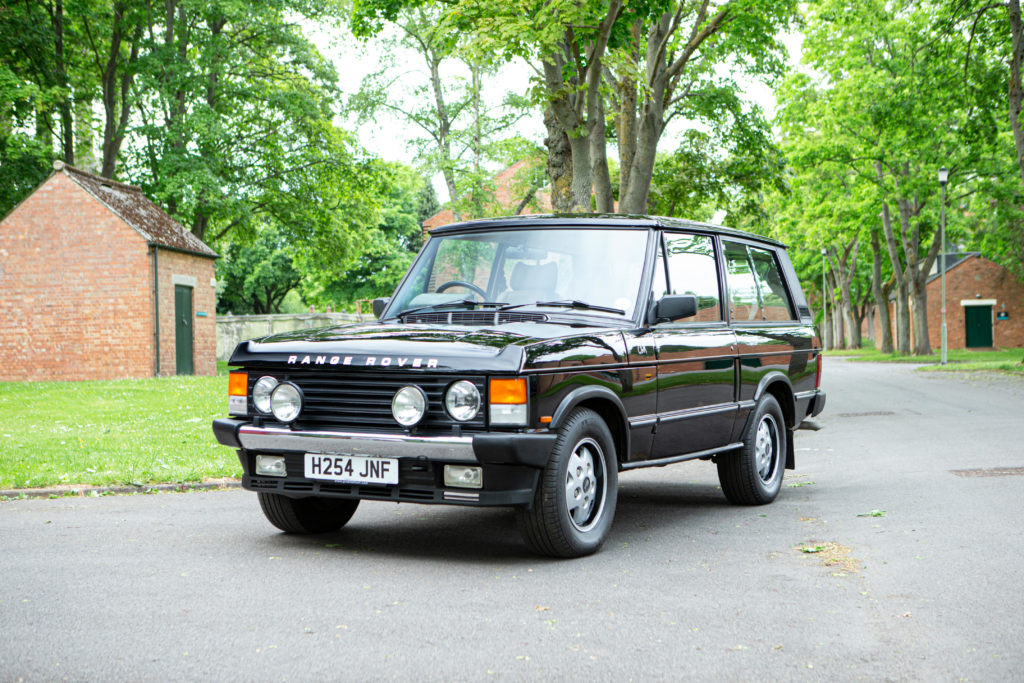
Production.
Land Rover approved limited production of just 200 CSKs following its unveiling at the 1990 UK Motor Show. Its introduction was heralded as a celebration of the 20th anniversary of the original launch of the Range Rover. It arrived to mixed acclaim. Some wondered why an ‘off-roader’ needed a fast on-road performance while others heralded it as the “Range Rover that should have always been”. A blend of luxury, performance and, by the use of clever engineering, next to no sacrifice in its off-road capabilities. But once driven – even to this day – one is totally smitten.
The CSK came only as a 2 door version shortly before that body shell was phased out of the range. By the time of its launch almost all Range Rover sales were 4 door but Land Rover considered that two doors added to the car’s sporty credentials.
All this did not come without a hefty price tag. A CSK would set you back £28,995 for the manual or £30,319.32 for the automatic. Land Rover successfully introduced an element of exclusivity. Not just by the limited numbers on offer, but for the first time buyers were given an exclusive ‘owners pack’ which included a bespoke brochure and a signed certificate of authenticity. These packs are now as rare as hens’ teeth and are collectors’ items in themselves.
The CSK features a number of modifications improving both performance and passenger comfort and became the fastest production Range Rover ever built at that time. It’s looks were emphasised by the high gloss Baluga Black finish, silver pin stripe down the length of its coachwork and a front spoiler carrying two fog lamps. Unique silver alloys were used and the CSK’s looks were rounded off by bespoke “CSK” decals on the tailgate and both scuttle panels. Don’t be taken in by the apparent authenticity of that signature. Rumour has it that Spen King had to provide four versions of his stylised signature before the design and marketing chaps were content!
So respected is the CSK as the definitive sports SUV over the decades that followed, in 2005 Land Rover borrowed CSK 001 and shipped it to Spain to accompany the release models at the World press launch of the first Range Rover Sport.
The genuine CSK should not be confused with the Australian look-a-like. The Australian importer at the time gave a special treatment to 400 4 door Vogue SE’s and badged them “CSK”.
Technical
The CSK was powered by Land Rover’s proven 3.9 litre, V8 engine. But after being re-chipped it delivered a, then, class-leading 185bhp. Only 49 of the run of 200 were given an auto transmission box. The remainder were fitted with a manual 5 speed transmission.
The increase in performance was complemented by improved handling at high speeds with the introduction of front and rear anti-roll bars and sports dampers to give a smoother, more comfortable ride. The drive was permanent 4 wheel delivered through a dual range transfer box. This together with the enthusiastic 3.9 petrol V8 delivered that punchy 185 BHP at 4,750 revs. A range topping speed of 114 mph (113.5 for the Auto) was quoted and 0-60 mph in 9.9 seconds. Knocking over a second off that for regular models. No mean feat for a vehicle weighing in at 2 tons.
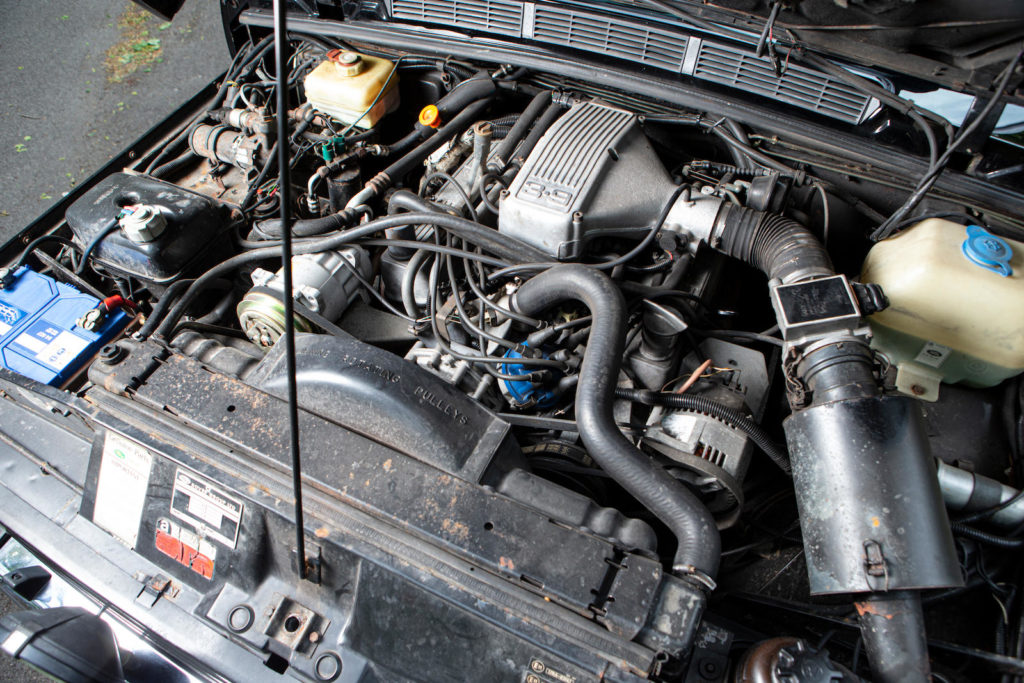
Standard equipment includes a six-speaker security coded stereo system, air-conditioning, central locking, and electrically operated tilt/slide sunroof, electric windows and heated door mirrors. Externally the car was finished in Beluga Black with American Walnut trimmings inside and accompanying leather upholstery. Also, standard was the world’s most advanced four-wheel drive ABS braking system preventing wheel-lock in the worst conditions on any combination of surfaces.
Surprisingly Land Rover did not set aside a series of Chassis numbers for this edition. They were merely numbered in sequence with others coming off the line at the time. It is therefore not a straightforward exercise validating a given number. But Petrol versions were in the sequence SALLHABM7GA****** and auto box builds likewise but replacing the ‘7’ with a ‘3’.
Our vehicle
SALLHABM3GA462052
H 254 JNF
Number 126 of 200. This CSK offers more rarity being one of only 49 CSK’s fitted with automatic transmission. The car was subject to a light restoration by London specialist Graeme Hunt between 2012 and 2014 which included a bare metal bodywork restoration and now presents with a very sharp panel fit. Supporting documentation and pictures detailing the works are included in the car’s history file showing work which was carried out to a very high standard that is still evident today. In 2013 the original 3.9 V8 engine underwent a full rebuild and, at the same time, a new stainless steel exhaust and manifold were also fitted. Supplementary work included a new quilted tan leather interior which perfectly complements the Beluga black paintwork.
The car was purchased by LRHC in 2020 and came with the original handbook and sales brochure. The service history includes nine services carried out by Land Rover Lincoln, Land Rover Boston and Andrews Land Rover with services at 6,851; 11,453; 24,010; 29,885; 48,671; 54,721; 61, 849; 67,098 and 80,240 miles.
To secure this popular 29 year old exhibit for our collection we had to part with just £3,000 short of the original sale price. Who says cars depreciate in value?
LRHC May 2020
